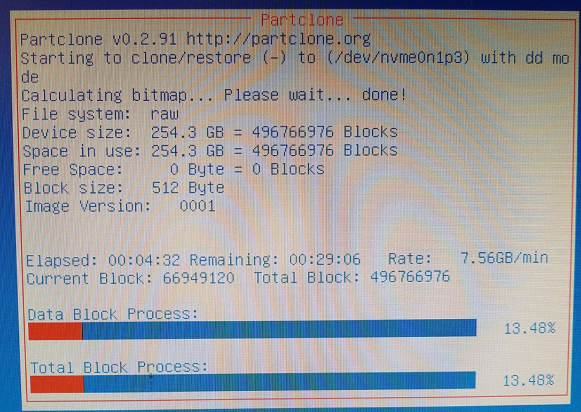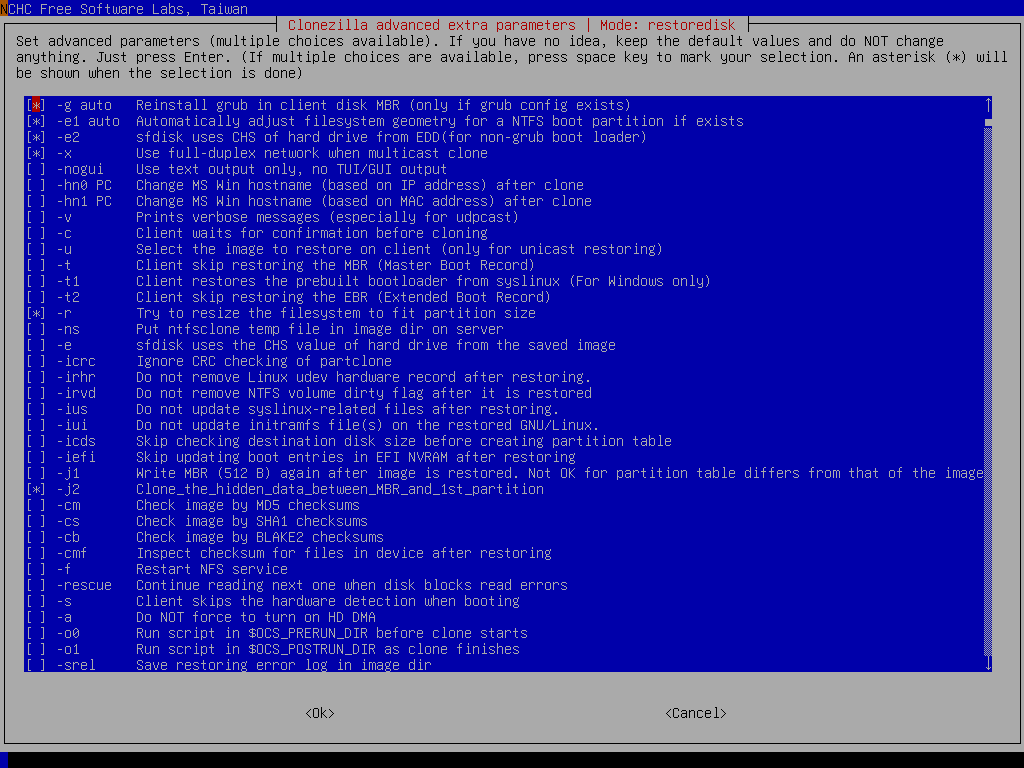

- CLONEZILLA IMAGE TO SMALLER DRIVE LVM HOW TO
- CLONEZILLA IMAGE TO SMALLER DRIVE LVM SOFTWARE
- CLONEZILLA IMAGE TO SMALLER DRIVE LVM ISO
- CLONEZILLA IMAGE TO SMALLER DRIVE LVM FREE
If you're not ready for this, maybe CloneZilla and PartImage are not for you. There is also some use of the command line involved. General, understand the Linux notation of hard drives and partitions - and, of course, know what hard disks and
CLONEZILLA IMAGE TO SMALLER DRIVE LVM ISO
I will use CloneZilla to backup an Ubuntu station and then I will use PartImage to backup a Windowsīoth of these programs require that you be able to burn ISO files to CD/DVD, boot from a live CD and in
CLONEZILLA IMAGE TO SMALLER DRIVE LVM HOW TO
In this article, I will reach you how to use them to backup your system, demonstrating the use of each in richĭetail. They will also work with practically any filesystem, including Windows NTFS. On the other hand, they are fast, reliableĪnd very much free.
CLONEZILLA IMAGE TO SMALLER DRIVE LVM FREE
There are two excellent free programs that offer the reliability and quality that you require - CloneZilla andīoth these programs are relatively easy to use, if not the easiest. Important and crucial procedure, you cannot risk the chance of using a second-hand imaging software.

CLONEZILLA IMAGE TO SMALLER DRIVE LVM SOFTWARE
Unfortunately, most imaging software products cost a lot of money. Operating system poses with its Activation policy. To reinstall everything and configure the applications, to say nothing of the additional nuisance the Windows Imagine the time cost, the long hours needed Reinstall the systems instead of image-restoring them every time. Restored some of them about 20-30 times, for various reasons, mainly software testing. In the last 3 years, I have backed up my systems at least 200 times and Periodically, to backup their operating system and also restore them, if needed.

This opens a huge window of opportunity and flexibility, in regard to backup, testing andĪny serious computer user will deploy some sort of imaging software in his/her arsenal and use them These temporal snapshotsĬan then be restored at later times, allowing the users to undo changes to their devices (and the relevant It a hard disk, a partition or any other, frozen in time at the moment it was created. This grants computer users the ability to not only save the actual files, but the actual status of a device, be The way it was the moment the image was taken. If you take the image and extract it to aĭevice, overriding any existing, previous structure, you will have created a perfect copy of the imaged system, Imaging is a process during which the device structure and the entireĬontents are copied, sector by sector to a backup file called image. Any operating system that exists on the device will not know any difference. If this structure is mirrored to another device, it is possible toĬreate an exact clone. These are actual, physical parcels containing theĭata, regardless of the file system used. Machine cannot read a hard disk formatted with NTFS, for instance.īeneath the file system, resides the most basic structure of any device - disk sectors.

Useful to systems that can read this file system, like Windows, Mac and some Linux distributions. For example, the NTFS file structure is only Meaningful to a file system that can read and interpret them. This is because operating systems do not work the way we perceive them. The other system will not be bootable, even though you have copied just about any file you can see and access. Single file on the drive C: to an external device and then copy the contents to a hard disk on another machine.Īnd then you try to boot the other machine. Here's anĮxample for you: Let's say you want to backup your operating system, Windows, for example. Backing up your system (and documents) is more than just copying a lot of files to another location.


 0 kommentar(er)
0 kommentar(er)
